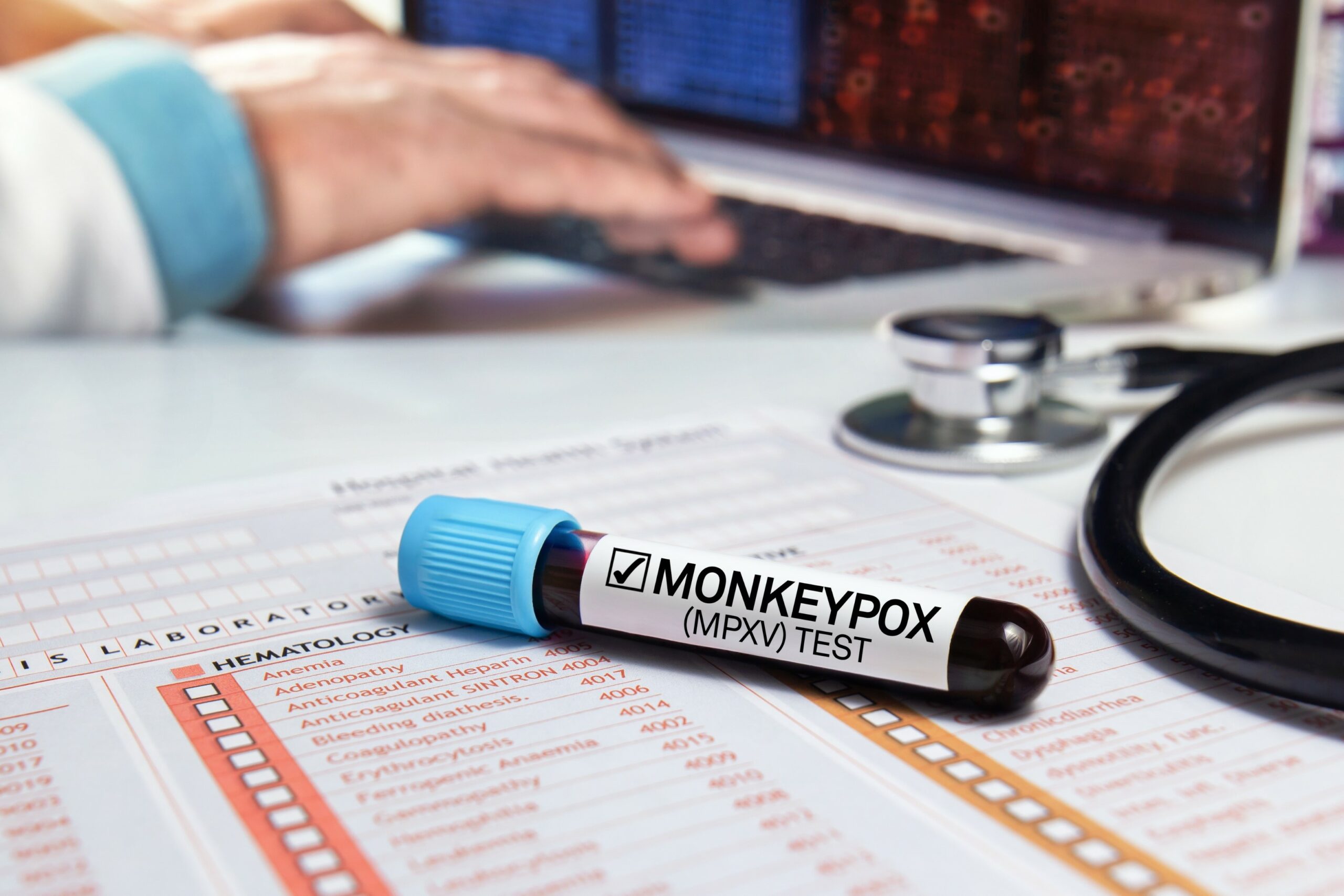The evolution of monkeypox in 4 scenarios

The nervousness of the last months seems to disappear while monkeypox is still affecting many countries and could reappear on a larger scale. Discovered in monkeys in Denmark in 1958 and after a first human case in 1970, this viral zoonosis has long been forgotten, except for a few sporadics cases following travels in some sub-Saharan African countries where it was considered a rare endemic disease. In the spring of 2022, the virus spreads within the community of “at risk” men who have sex with men (MSM) following festive gatherings, reaching its peak in the middle of summer. While 97% of the contaminations concern the MSM community, vaccination campaigns have been set up to curb the phenomenon. Today, the epidemic seems to have run out of steam, but there are many reasons to believe that it should not be considered a thing of the past. It could regularly re-emerge locally and spread again, including outside the “at risk” MSM community. So, foresight is needed for this year of 2023. Alcimed has studied the possible evolution of the Monkeypox pandemic and has identified 4 possible scenarios.
An effective fight against Monkeypox
With 136,000 doses already administered, France is the European country with the highest vaccination rate.
The first wave of contaminations begins in May 2022, following several isolated cases in Europe and in the United States. The spread accelerates after large festive gatherings while the virus is quickly identified as Orthopoxvirus by the scientific community. Prevention and vaccination campaigns are deployed in unequal ways on a worldwide scale to contain the emerging epidemic. The peak of contaminations will be reached during the summer, for a total of more than 80 000 cases and less than 50 deaths to date.
Among these cases, great differences in symptoms have been noted. While Monkeypox causes a flare-up of fever followed by numerous lymph nodes and a rash, nearly 50% of those infected show few or no symptoms.
However, the “at-risk” MSM community, which is health conscious and eager to be vaccinated, has been able to benefit from a rapid response from health authorities. With 136,000 doses already administered, France is the European country with the highest vaccination rate, thanks in particular to an initial stockpile of smallpox vaccine to prevent a bioterrorist attack, and the purchase of more than 250,000 doses to counter the spread and replenish its stocks.
Although almost all cases are reported after close contact during sex, monkeypox is still not considered a sexually transmitted infection, much to the chagrin of LGBTQ+ groups actively fighting among MSM.
What are the possible scenarios?
While the number of contaminations is decreasing in Europe, the WHO reports that some South American countries are still experiencing a high rate of spread, such as Brazil and Colombia, where cases exploded in July and September respectively. This leads the scientific community to consider four scenarios, from the least likely to the most obvious, based on the latest WHO figures and recent short-term projections from the Centers for Disease Control and Prevention (CDC).
- The first one, unthinkable, considering an epidemic whose peak was reached this summer, as close to disappearing, is refuted by many doctors and epidemiologists.
- The second one, foresees an explosion of cases in the next months. It is unlikely when we see that 97% of contaminations are concentrated in a small community, as was the case for HIV at the time.
- The third and more likely hypothesis is that the virus will become endemic in a small community, but will remain under control, thanks to a high rate of vaccination facilitated by the total coverage of health care costs.
- The most relevant hypothesis is that of an endemic disease whose number of contaminations could explode on a recurrent basis.
Among the explanations that support this fourth scenario, festive gatherings at risk, more numerous with the return of spring, could favor the epidemiological resurgence, while a decrease in vigilance and a slowdown in vaccinations have already been observed.
Moreover, the risk of retrozoonosis, which consists in the constitution of a reservoir of the disease in the wild environment, is real and would prevent the rapid eradication of Monkeypox virus.
Finally, the issue of vaccine schedule is perhaps the most important. While very few second doses have been administered worldwide, the full vaccination schedule requires a booster after two years to achieve full immunization. However, neither governments nor even LGBTQ+ associations seem to be aware of this issue.
The combination of these different factors can only strengthen the experts’ predictions, while the Monkeypox variant “CLADE I”, 10 times more deadly and which has been raging in Congo for years, could well come to play the spoilsport.
After a dramatic increase at the beginning of the summer, the implementation of prevention and vaccination measures against Monkeypox will have made it possible to contain the spread of the virus to only 80’000 cases worldwide. The healing, which is supposed to be immunizing, will certainly have played its role in the face of a virus that mutates little. If it is not surprising that the revelation to the general public of this new epidemic at the end of Covid-19 has sown panic, the casualness which follows could sound the return of the virus in the next months… Alcimed has followed closely the evolution of this virus even before the appearance of the first cases in the Western world. Very involved in rare diseases, we can accompany you in the understanding of this epidemiological phenomenon.
About the author,
Lucas, Consultant, and Quentin, Project manager in Life Science at Alcimed Switzerland